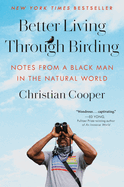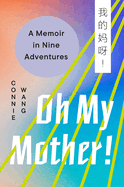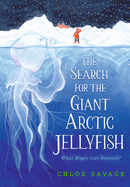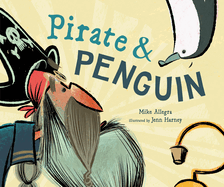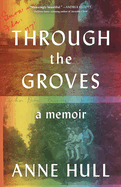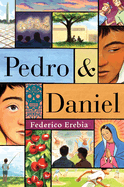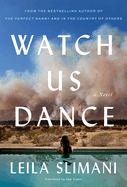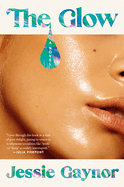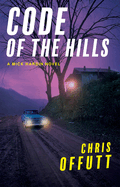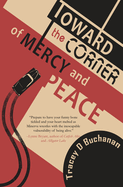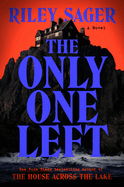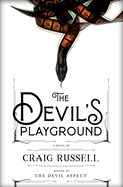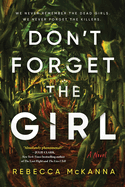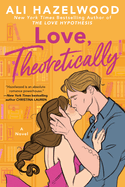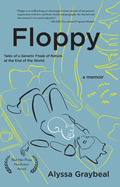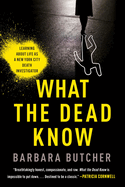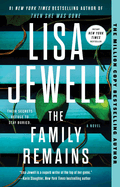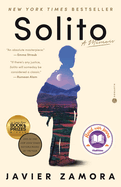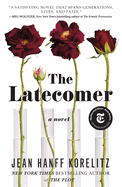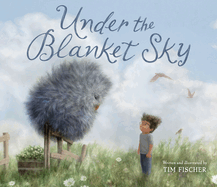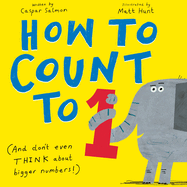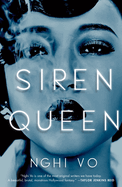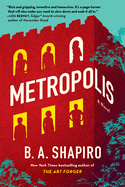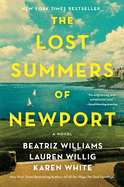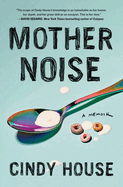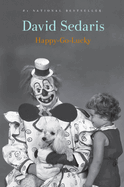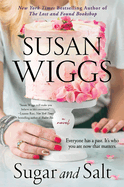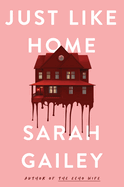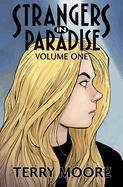Friday, June 23, 2023
We review some terrific memoirs this week: Christian Cooper takes "seemingly disparate topics... and skillfully fits them together" in Better Living Through Birding: Notes from a Black Man in the Natural World; journalist Connie Wang's nine "effervescent" travel-based essays in Oh My Mother! upturn stereotypes of suffering immigrants and American dreamers; and Pulitzer Prize-winning journalist Anne Hull's "vivid memoir," Through the Groves, re-creates a 1960s childhood among Florida's citrus trees. And in The Search for the Giant Arctic Jellyfish, debut author/illustrator Chloe Savage imagines a delightful marine adventure featuring female scientist Dr. Morley. Plus so many more!
In The Writer's Life, Stephen Buoro discusses his debut, The Five Sorrowful Mysteries of Andy Africa, plus the book that "changed the way I saw the world."
I Am Homeless If This Is Not My Home
by Lorrie Moore
Lorrie Moore's fourth novel, I Am Homeless if This Is Not My Home, is a wry, shape-shifting meditation on how we might continue to commune with the dead.
In late October 2016, Finn has been suspended from his high school history teaching job "for his wanderings away from the curriculum." Given his willingness to entertain conspiracy theories about the moon landing and prominent political assassinations, the disciplinary action is hardly a surprise. The timing is fortuitous, at least, in that it allows Finn to drive from Tennessee to New York to visit his brother, Max, who has pancreatic cancer and is now confined to a Bronx hospice. Max is too weak to speak much, but he hasn't lost his mental capacity or his quick wit.
Finn departs "the bardo of the hospice" only to journey further into death when the news comes that his ex-girlfriend, Lily, who had long suffered from depression, has died by suicide. Moore (See What Can Be Done) typically sticks to realism, so readers may be surprised by the magical turn she takes at this point, as Finn picks up Lily from the cemetery and embarks on a surreal road trip. The couple's banter is delightful, but there's no getting beyond the apparent fact that Finn is conversing with--and making love to--a corpse. Is this really happening, or is it an allegory?
Both playful and poignant, this story bears Moore's trademark psychological depth and humor. She takes a risk with the plot, but this novel should appeal to fans of Lincoln in the Bardo. --Rebecca Foster, freelance reviewer, proofreader, and blogger at Bookish Beck
Discover: Lorrie Moore's poignant fourth novel blends recent history and magical realism as a high school teacher goes on a journey to the bardo and the underworld to learn how to come to terms with loss.
Watch Us Dance
by Leila Slimani, transl. by Sam Taylor
Decolonization's effect on Morocco is the subject of Watch Us Dance, the heartfelt second installment of a planned trilogy based on author Leïla Slimani's family. The first volume, In the Country of Others, spanned the mid-1940s to mid-1950s. This novel, starting in 1968, revisits the Belhaj family when Morocco is no longer a protectorate of France. Amine, the native-born patriarch, has grown rich from his farm and is asked to join the Rotary Club, where "bourgeois Moroccans mingled with members of the European community" and acted as if "colonization had never been anything more than a misunderstanding." French-born wife Mathilde, meanwhile, suspects him of cheating and gets revenge by skimming off some of the farm's earnings for herself, "a reward for her sacrifices."
Slimani (Sex and Lies; Adèle) seamlessly shifts perspectives among the four family members, each perspective captivating in its own way, to show the strains on the couple's marriage and the developments in their children's lives, from daughter Aïcha--who studies medicine in Strasbourg and falls in love with Mehdi, an economics major who dislikes white people yet "had only one ambition in life: to become like them"--to son Selim, who disappears when he takes up with a group of hippies. If Watch Us Dance, translated from the French by Sam Taylor, doesn't have the dramatic sparkle of its predecessor, it offers a powerful portrait of a country and family in transition and characters bombarded by prejudice, as when a haughty stylist says to Aïcha, "We don't usually do this kind of hair." In countries, as within families, transitions are never easy. --Michael Magras, freelance book reviewer
Discover: The second novel in Leïla Slimani's trilogy offers a powerful portrait of a family and a country during Morocco's early years of independence.
The Glow
by Jessie Gaynor
Jessie Gaynor's first novel, The Glow, proves just how far people will go to make their skin luminous. Jane Dorner, a young publicist, stumbles upon the FortPath wellness retreat (while trying to save her job) and decides the extraordinarily beautiful woman on its website will be her next big client. Tom, FortPath's co-owner, greets Jane as she steps out of the cab for her comped weekend stay at the farm. But she's really there for Cass. Cass, Tom's wife and the face of FortPath, is both the most beautiful woman Jane has ever seen and the most enigmatic. Living mostly off zucchini, bee pollen, and daily meditation, Cass captivates Jane with her radiance, especially the glow of her skin. Becoming somewhat obsessed with her new--and ever so slightly cultish--wellness community, Jane is determined to capitalize off whatever it is that Cass is selling. But Tom is hesitant about Jane's business advances.
Perpetually entertaining and captivatingly funny, The Glow is a deep dive into what makes the wellness industry so fascinating. Jane's struggles with debt, uncertainty, and morality pack her inner musings with wit. Cass, on the other hand, answers all of life's questions with a natural remedy or an Instagrammable inspirational quote. Gaynor's debut is successfully charming and satirical--and utterly delightful. But it also interrogates the question: Is a lifetime subscription to the health-and-wellness lifestyle sustainable, or just a product to sell to women who will do anything to obtain the glowing complexions of their dreams? --Clara Newton, freelance reviewer
Discover: An in-depth investigation into the wellness industry, Jessie Gaynor's captivating debut novel explores those who attend--and run--the wellness retreats of many an Instagram feed.
Code of the Hills
by Chris Offutt
Fiction writer, screenwriter, and memoirist Chris Offutt (Shifty's Boys; Country Dark) delivers Code of the Hills, the excellent third installment in his Mick Hardin series of crime and punishment set in Kentucky's Appalachian hills. Hardin has returned home to eastern Kentucky for a brief visit after his discharge from the army. A soldier and military criminal investigator for 20 years, he, like many of his comrades, struggles to imagine a future outside the rhythms, rewards, and confines of military life. But with a flight soon to take him for an extended stay in France, these questions are on hold for the time being. Then Hardin's sister, the county sheriff, is shot and badly wounded while investigating the murder of a local mechanic. Hardin, compelled to investigate, uncovers decades-long, interconnected local family feuds and small-time criminals running rackets in the hills and beyond. In the process, he deploys targeted violence, extralegal techniques, and his refined local bravado to uncover truths that challenge conventional definitions of justice.
In this third installment, Offutt once again demonstrates his command of the detective form, delivering well-plotted satisfactions that still spurn cliché. His prose expertly conveys a blend of child-like wonder at the ragged beauties of the Appalachian hills with deep pessimism over humanity's awful capacities. Less about elaborate conspiracies or a fathomless underworld, Code of the Hills puts the naïve intimacies, pathetic pettiness, and moral dilemmas of its subjects under the microscope. The conclusion is quiet but startling, with an emotional weight belying its calm surface. --Walker Minot, writer and editor
Discover: Chris Offutt's third installment of his Mick Hardin series is a thrilling work of detective fiction, action-packed yet intimate.
Toward the Corner of Mercy and Peace
by Tracey Buchanan
Tracey Buchanan's first novel, Toward the Corner of Mercy and Peace, combines humor, inspiration, and small-town quirk in a story of healing and forgiveness. In 1950s Paducah, Ky., 52-year-old widow Minerva Place teaches piano lessons, hangs around the local cemetery, and worries she might be losing her mind. Her research into the lives of the people interred in the graveyard has taken a strange turn--her deceased subjects sometimes appear and speak to her. These possible ghosts or possible hallucinations aren't the only ones haunting her. Young widower Robert McAlpin has just moved into town with his son, George, and the child can't seem to leave Minerva alone, despite her distinct veneer of unfriendliness. In a moment of weakness, she agrees to give the child piano lessons, even though he is too young, too unruly, and, worst of all, a boy. "[B]oys were unreliable, messy, and often uncooperative," according to Minerva. An unlikely friendship blossoms among the prickly widow, the headstrong boy, and his young father. Then a sudden tragedy threatens Minerva's newfound happiness, causing her to reflect on the pain of her past, the secrets of the buried, and the power of grace and forgiveness.
Minerva is a delightful cactus of a protagonist, her cantankerous, judgmental exterior hiding her vulnerability and the emotional scars left by her upbringing and marriage. Interstitial monologues to Minerva from her departed research subjects give life and color to Paducah. This folksy portrait of a quintessential American hometown charms. --Jaclyn Fulwood, blogger at Infinite Reads
Discover: A curmudgeonly widow finds herself befriending a young father and his son in 1950s small-town Kentucky in this humorous and inspirational novel.
Mystery & Thriller
The Only One Left
by Riley Sager
Riley Sager (Lock Every Door; Final Girls) furthers his reputation for innovative, highly original plots in The Only One Left, his seventh novel. Evoking Shirley Jackson's classic We Have Always Lived in the Castle, Sager invigorates the timeless creepy-mansion trope, melding the gothic novel with a clever thriller that delves into the debilitating effects of rumors, legends, and presumption of guilt. The Only One Left, set in Maine during 1983, introduces home-health aide Kit McDeere, fired after her previous patient died. Kit, broke and living with her father who ignores her, reluctantly becomes caregiver for the paralyzed 71-year-old Lenora Hope, who lives in the mansion Hope's End, "a marvel of Gilded Age excess" high on a perilous cliff. When she was 17 years old, Lenora was the only survivor of an attack in which her parents and sister were murdered. Lenora was the logical suspect, but police lacked evidence. She has been a recluse for decades, living with a few servants, and the subject of vandalized walls and a cruel schoolyard rhyme. Kit connects with Lenora, but comes to believe her patient is guilty.
The Only One Left unfolds at a pitch-perfect pace, at once both leisurely and brisk, as Kit learns more about the murders and Lenora. Sager accelerates the spooky factor: the more Kit delves into the past, the more the mansion seems to rebel, as if expelling its secrets and crumbling along with the cliff. Each unexpected twist enhances The Only One Left. --Oline H. Cogdill, freelance reviewer
Discover: In this deliciously spooky thriller, a caregiver for a paralyzed elderly woman comes to believe she may have murdered her family decades ago.
The Devil's Playground
by Craig Russell
Among the choicest settings for a mystery novel is surely Hollywood, a world that traffics in and profits from deception and illusion. With its glamorous cast and frequently opulent milieus, Craig Russell's The Devil's Playground is a lavish production of the golden age of Hollywood, albeit one featuring a glitter-free leading lady with a crime to solve--or at least clean up.
Mary Rourke is no starlet: she's a middle-aged fixer for Carbine International Pictures, which hasn't quite wrapped shooting The Devil's Playground when she's informed that its female lead, Norma Carlton, has been found dead in bed. As Mary surreptitiously questions people in Norma's orbit, others involved with the production suffer mishaps and worse. Mary becomes half convinced that the film, which is being promoted as "the greatest horror movie ever made," is, as everyone's saying, cursed.
Mary's story, which unfolds in 1927, is threaded with chapters set decades earlier that involve the occult, with which Norma was infatuated. All of this is framed by chapters set in 1967 that center on a film historian who has been hired to track down the rumored lone surviving copy of The Devil's Playground. Russell, a Scotsman who has won the McIlvanney Prize for The Ghosts of Altona and Hyde, is clearly something of a film historian himself, using his deep knowledge of Old Hollywood and behind-the-scenes industry workings to shape his nesting doll of a novel. Deliciously, the cool, hard-bitten tone of Mary's chapters is in lockstep with that of a classic noir. --Nell Beram, author and freelance writer
Discover: Craig Russell uses his deep knowledge of Old Hollywood to shape this elaborate thriller, which centers on a movie studio's fixer, and her effort to get to the bottom of a starlet's death.
Don't Forget the Girl
by Rebecca McKanna
In Don't Forget the Girl, short story writer Rebecca McKanna's perceptive first novel, two women wrestle with years-old guilt, exploring whether or not their friend who disappeared 12 years ago was the victim of a serial killer who's about to be executed--while also wondering if they could have protected her. Abby Hartmann was an 18-year-old freshman at the University of Iowa when she vanished Halloween night after walking away from her two best friends, Bree Hadley and Chelsea Navarro, during an argument. They are sure she became another victim of Jon Allan Blue, a Ted Bundyesque killer scheduled to be executed in 25 days. Blue never admitted Abby was among his victims; the police focused on his more sensational murders. Estranged for years, Bree and Chelsea put aside their grudges to work with a popular podcaster dedicating the next season to Blue's murders. The women are determined to uphold Abby's memory and to see that she is counted among Blue's victims.
McKanna, who layers realistic suspense and plot twists, elevates her insightful character studies with crackling dialogue and complex friendships. Abby's presumed murder affected her friends differently. Bree drinks excessively, apathetically teaches photography at a small college--"Photography used to be a hunger. Now it seems like something hanging over her head"--and has an emotionless affair with a student. Now married, Chelsea is an Episcopal priest, still worried that her clandestine affair with Abby contributed to her vanishing. Don't Forget the Girl is memorable. --Oline H. Cogdill, freelance reviewer
Discover: In this suspenseful and perceptive debut,two former friends explore whether or not the third member of their trio was the victim of a serial killer scheduled to be executed in 25 days.
Romance
Love, Theoretically
by Ali Hazelwood
In Love, Theoretically, Ali Hazelwood (Love on the Brain; The Love Hypothesis) once again delivers a hilarious, spicy, and heartfelt romance set in the competitive world of STEM academia. Hazelwood revisits her much-loved enemies-to-lovers dynamic with a giant, grumpy, smitten hero and a down-on-her-luck heroine trying to make her way out of the hell that is adjunct professorship. In a twist on the fake-dating trope, theoretical physicist Elsie Hannaway first meets Jack Smith when she's working as his aromantic brother's paid girlfriend to supplement her terrible adjunct wages. She's cobbled together several teaching jobs and has no time to conduct research, nor does she have health insurance--something especially important for people, like herself, who have diabetes. Now she's finally made it into the final round of interviews for a coveted tenure-track position at MIT and things are looking up--until she meets her interview team, including Jonathan Smith-Turner, the experimental physicist who nearly ruined her mentor's career a decade earlier. And Jonathan? He's Jack.
Love, Theoretically is delightfully nerdy and laugh-out-loud funny. Elsie's offbeat roommate is a joy, and a smattering of e-mails from Elsie's students are a highlight. Even the heavier aspects of Hazelwood's character work are enjoyable. Demisexual people-pleaser Elsie spends her life contorting herself to be what others want, so Jack's refusal to let her do that with him is quite charming, despite his terseness. Hazelwood successfully resolves the professional issues at play and employs her signature blend of banter, romance, and humor to send her characters off to a much-deserved happy ending. Readers looking for a geeky, heart-melting, funny romance will want to pick this up. --Suzanne Krohn, librarian and freelance reviewer
Discover: Physicists from rival disciplines must correct mistaken assumptions--and identities--in this nerdy, funny, sexy romance set in the world of STEM academia.
Biography & Memoir
Better Living Through Birding: Notes from a Black Man in the Natural World
by Christian Cooper
Christian Cooper's memoir, Better Living Through Birding, takes readers beyond the Central Park incident that gained him some notoriety in 2020 and into the mind of a thoughtful, observant man: birder, nerd, bicyclist, and much more. Cooper recounts the event in Central Park's Ramble when a white woman (falsely) told the police he was threatening her, but he doesn't dwell on it. Instead, he shares his lifelong passion for birds, including childhood Sunday morning bird walks on Long Island, and his decades of birding Central Park. He also describes his experience as a queer Black man: his gradual acceptance of his own identity, his years at Harvard, and his history of activism. (Fellow nerds will especially enjoy Cooper's memories of his time at Marvel Comics, where he rubbed shoulders with Marvel legends, and helped introduce several groundbreaking gay characters.)
With a keen eye for detail, Cooper presents to readers Central Park's birds (migratory and native) and some of his fellow birding humans. The narrative is sprinkled with helpful birding tips for novices and what Cooper dubs "the Pleasures of Birding": the joy of sighting an unusual species, the satisfaction of puzzling out a bird's identification, the peace of being out in nature. Cooper draws in seemingly disparate topics--pagan spirituality, complex family relationships--but skillfully fits them together under the umbrella of birding, savoring nature, and paying attention. Part memoir, part love letter to birding, Better Living Through Birding is a compelling journey through (and beyond) Central Park, in the hands of a capable guide. --Katie Noah Gibson, blogger at Cakes, Tea and Dreams
Discover: Central Park birder Christian Cooper's memoir weaves tips on birding into a thoughtful account of his life as a writer, birder, and gay Black man.
Oh My Mother! A Memoir in Nine Adventures
by Connie Wang
The nine effervescent travel-based essays in journalist Connie Wang's first book, Oh My Mother!, upturn stereotypes of suffering immigrants and American dreamers while deftly tracing her family's adjustment to life in the U.S. As Wang explains, the Chinese phrase "wŏde mā ya," literally "oh my mother," is equivalent to the interjection "oh my god." Qing Li, her mother, has been Wang's inspiration as a first-generation immigrant; she's been "the angel and devil on my shoulders, the little voice in my head, and the creative muse that I have pushed against and climbed upon."
Qing gave up her editing career to join her husband, Dexin, getting his physics Ph.D. at the University of Nebraska. Dexin's participation in Tiananmen Square protests precluded their permanent return to China, so they soon sent for two-year-old Connie, too. As the family moved around the Midwest for Dexin's work, they embraced all-American phenomena such as road trips, timeshares, Disney World, and Las Vegas. Wang contrasts adult life in New York City and Los Angeles with her upbringing, and gains perspective on return visits to China: "it felt strange to see my parents as social, popular people." In two standout essays, "Fancy Things" and "R&R," she celebrates a shared love of fashion, as she and Qing tour the opulent Palace of Versailles, and marvels at her mother treating lifelong insomnia with marijuana while in Amsterdam. As a friend observes to her, "Qing's always been a trendsetter." Affectionate and incisive, these mother-daughter essays illuminate family relationships and life across cultures. --Rebecca Foster, freelance reviewer, proofreader and blogger at Bookish Beck
Discover: In her effervescent debut, journalist Connie Wang celebrates her mother's ongoing legacy and examines the sacrifices and discoveries of first-generation Chinese immigrants in the U.S.
Through the Groves
by Anne Hull
Pulitzer Prize-winning journalist Anne Hull's vivid memoir, Through the Groves, re-creates a 1960s childhood among Florida's citrus trees, compassionately tracing how the nuclear unit broke apart, and how she came to accept her sexuality. The Central Florida orange groves where, as a girl, Hull rode along with her father--a fruit buyer for a juice processing company--were magical. "A dirt road took us there" is the memoir's matter-of-fact yet evocative first line. Her father's territory was a frontier all theirs to explore--and during a more innocent time, when no one considered the consequences of cigarettes or pesticides.
However, Hull was aware of her parents' unhappiness, especially as her father's alcoholism progressed. After their divorce, her mother took her and her brother to live with her maternal grandmother, "Damie," and then with a new stepfather named Ted. Hull effectively reinhabits her childhood perspective to bring these figures to life. The narrative speeds up through Hull's teen years and ends with her starting a journalism fellowship at Harvard. The time span allows her to track her reconciliation with her father and her sexual identity. Hull had always been a tomboy, but not until her freshman year of college, when she kissed a female colleague from her Christmas-break restaurant job, did she realize she was a lesbian.
Development, including the construction of Disney World, led to the vast orange groves Hull remembers being cut down. Like childhood, they are lost forever, but memory can, fleetingly, bring them to life again. --Rebecca Foster, freelance reviewer, proofreader and blogger at Bookish Beck
Discover: A fifth-generation Floridian's vivid memoir of growing up among citrus groves brings compassion to a family story of alcoholism, marital breakdown and the author's route to accepting her sexuality.
Floppy: Tales of a Genetic Freak of Nature at the End of the World
by Alyssa Graybeal
Alyssa Graybeal's quirky debut memoir-in-essays, Floppy, arrays snapshots of how creativity and order--in the form of knitting and librarianship--help her cope with chronic illness. "As a kid, I fell down stairs like it was my hobby," she writes. In the piece "Lucky Fall," she recalls bragging to an ER doctor about the hundreds of stitches she'd had by age 10. This was no mere clumsiness; on that hospital visit, she was diagnosed with Ehlers-Danlos syndrome, a connective tissue disorder that leads to persistent pain. With no genetic follow-up or therapeutic intervention until her 30s, Graybeal didn't realize how much her condition would affect daily life, including an unusual gait, sensitivity to temperature extremes, allergies, cramps after eating, and joint pain.
Graybeal grew up in the Pacific Northwest and returned to Oregon after her degrees and marriage in Canada. An effective metaphor contrasts her faulty collagen fibers with the wool she dyed and spun. Crafting links multiple areas of her life. In "How to Dress for Montreal Winter," a compassionate friend knits her mittens; when, in "Framed," she meets her future wife, Mags, she admires Mags's fingerless gloves. The pair live simply and pursue handiwork until Mags's alcoholism drives them apart.
The dynamic essays bounce between times and places. Narrative highlights, witty vs. somber, include her exchange year in France, buying a portable bathtub, and the loss of her half sister to cancer. With realism and occasional whimsy, Graybeal casts a wry eye over life with chronic illness. --Rebecca Foster, freelance reviewer, proofreader and blogger at Bookish Beck
Discover: The 39 dynamic essays in this quirky debut memoir cast a wry eye over the complications of life with chronic illness.
History
The Sullivanians: Sex, Psychotherapy, and the Wild Life of an American Commune
by Alexander Stille
By the time singer Judy Collins quit therapy with the Sullivan Institute for Research in Psychoanalysis, she was calling it a cult. Hard-drinking patient Jackson Pollock certainly wasn't helped by the institute's attitude that alcohol consumption fueled creativity. In The Sullivanians: Sex, Psychotherapy, and the Wild Life of an American Commune, Alexander Stille investigates how this misbegotten alternative community racked up hundreds of patients, many of considerable accomplishment. The book is a stealthy and spellbinding cautionary tale with notes of melodrama, tragedy, and horror story.
Manhattan's Sullivan Institute, which existed from 1957 to 1991, was cofounded by Jane Pearce, who was a trained psychoanalyst, and her then-husband, Saul Newton, who was not. Patients were expected to sever ties with their families because, according to Sullivanian thinking, the family was toxic. Sullivanians lived polygamously, its women discouraged from having kids; the kids they did have were usually raised by in-house babysitters or sent to boarding school. Therapists freely slept with their patients, and predatory director Newton operated as the institute's Harvey Weinstein.
Stille (The Force of Things) laces his portrait with insights pulled from his conversations with former Sullivanians, most (not all) of whom look back bitterly. The Sullivanians will leave readers with an unsettling appreciation for how easy it is to embrace ideologies that justify irresponsible and cruel behavior (excessive drinking, extramarital cheating, avoiding the kids). As the adult daughter of former Sullivanian parents puts it, "the Sullivanian dogma fit in quite nicely with what they already wanted to hear." --Nell Beram, author and freelance writer
Discover: This stealthy and spellbinding cautionary tale explains how one misbegotten alternative community--some would say cult--racked up hundreds of patients in midcentury Manhattan.
Social Science
What the Dead Know: Learning about Life as a New York City Death Investigator
by Barbara Butcher
Barbara Butcher is one tough lady. Only the second woman ever appointed to serve as a death investigator in Manhattan, she's helped solve crimes that could've callused and darkened her heart many times over. However, in her fascinating, down-to-earth memoir, What the Dead Know, she tells riveting personal stories about investigating homicides, suicides, and tragic accidents that moved and changed her life in extraordinary ways.
Butcher came to the profession through a series of unexpected, fortunate events. A teen who suffered from depression and suicidal impulses, and experimented with drugs, Butcher struggled for direction after high school. A woman she worked for at a nursing home took note of Butcher's potential and encouraged her to become a physician assistant. College coursework on anatomy, physiology, chemistry, pathology, and solving diagnosis puzzles lit a fire under Butcher's ambitions. She did work stints in surgery and gynecology and went on to earn a master's degree in public health. Just as Butcher was en route to a cushy but boring career as a hospital administrator, her personal life unraveled. After she hit rock bottom, she found Alcoholics Anonymous and some career counseling. Butcher was deemed best suited for a career as a coroner.
Inquisitive readers--especially fans of mysteries and true crime--will be captivated by Butcher's appealing, conversational writing style. She presents a trove of detailed, sobering case studies of how notorious investigations--including a chilling section about her work during 9/11--often wore her down, while also expanding her skill set and intellect, and enriching the depths of her character. --Kathleen Gerard, blogger at Reading Between the Lines
Discover: A dedicated medical examiner from the City of New York shares fascinating, soul-searching stories that came to define her career--and her life.
Now in Paperback
The Last White Man
by Mohsin Hamid
It happens to a lot of authors: sooner or later, they try Kafka on for size, as Mohsin Hamid has done (sort of) in The Last White Man. The opening is--it's impossible to avoid the word--Kafkaesque: "One morning Anders, a white man, woke up to find he had turned a deep and undeniable brown." Yet Anders, a trainer at an essentially all-white gym, isn't the only person in the unnamed town whose skin suddenly darkens. His transformation affects not only himself but also other white people in his life, including girlfriend Oona, a yoga instructor still processing her younger brother's drug-related death; Anders's father, "gaunt and ill," who--now that his son is a "dark man"--gives him cash and a rifle for protection; and Oona's mother, who complains that "our people" are changing, and is disturbed by the increase in "the dark faces on her street." As more of those faces darken, white militants try to run the transformed, including Anders, out of town.
Despite its Kafkaesque beginning, the novel, due to its depiction of town-wide transformations and subsequent social breakdown, bears a closer resemblance to Blindness, José Saramago's masterwork about a similar development. Hamid (Exit West; Discontent and Its Civilizations; How to Get Filthy Rich in Rising Asia) even uses the term "a kind of blindness," also noting that, "as with actual blindness," changes can lead to a new kind of seeing. The result is a frighteningly timely allegory about welcome forms of progress and the fears of people unable or unwilling to grow. --Michael Magras, freelance book reviewer
Discover: This disturbing yet timely allegory considers a town in which white people suddenly become dark-skinned.
The Family Remains
by Lisa Jewell
In The Family Remains, Lisa Jewell (Watching You; Then She Was Gone) presents a compelling sequel to The Family Upstairs that continues where that novel left off but also works as a stand-alone novel. The Family Remains begins with the discovery of a human skeleton in the mud of the banks of the Thames. As Detective Samuel Owusu investigates the bones, he quickly realizes that they connect to a famous murder-suicide that happened decades earlier.
Everything changed for Henry Lamb Jr. and Lucy Lamb, wealthy London siblings, when they were preteens. Their parents fell under the sway of a conman, and they suffered unspeakable horrors. Lucy gave birth at age 14 and was only recently reunited with her daughter. Henry has long avoided the trauma of his childhood and the murder of his parents by pretending to be other people. Meanwhile, jewelry designer Rachel Gold is in an abusive relationship, which she's trying to hide from her father and friends. As Detective Owusu's investigation continues, the lives of the Lambs and of Rachel will become entangled in shocking and unexpected ways.
Compulsively entertaining, the pace of The Family Remains never slows: from London to Chicago to the south of France, the action intensifies. And the mix of character development and unexpected surprises makes for a propulsive thriller with enjoyable depth. Fans of domestic thrillers are sure to love how Jewell explores psychological and physical scars in The Family Remains. --Jessica Howard, freelance book reviewer
Discover: Domestic thriller fans are sure to love Lisa Jewell's compulsively readable sequel to The Family Upstairs.
Solito
by Javier Zamora
Solito is Javier Zamora's poetic memoir of his 3,000-mile trek from El Salvador to "La USA" as an undocumented migrant. This heart-pounding, vivid recollection of a desperate path to a better life takes readers every terrifying step of the way.
In a first-person, present-tense narrative, nine-year-old Zamora--whom his Abuelita Neli calls "Javiercito"--recalls preparing for "the trip." It is 1999, and he leaves his beloved Grandpa, Abuelita and Tía Mali to join his Mom and Dad in California. He imagines flying like Superman to a reunion with his parents after his family pays Don Dago, the coyote who, four years prior, safely guided his Mom north. Stoic, resilient Javier seems older than nine, but Zamora (Unaccompanied) reveals the shy boy who struggles to tie his shoes, fears flush toilets, and fantasizes about ice-cold Coke. The trek becomes an increasingly harrowing two-month journey by boat, bus, and pickup truck--but mostly step by step. Lonely Javier establishes a protective "fake family" with Patricia and her daughter, Carla, as well as a man named Chino. Successive "polleros" guide them, handing the travelers off like a flock of chickens. Their fear of "La Migra" heightens as they approach what Zamora calls "Gringolandia."
Zamora creates a sense of immediacy with vibrant descriptions: the moon like "a lopsided egg," rationed water sloshing in plastic jugs with duct-tape handles, sweltering days turning to freezing nights, the group of migrants walking in double lines like a "fat centipede." Javier and his "family," undaunted by two failed crossing attempts and a terrifying detention, repeatedly whisper: "Está bien." Miraculously, this "it's okay" comes true. --Cheryl McKeon, Book House of Stuyvesant Plaza, Albany, N.Y.
Discover: This suspenseful memoir presents the heartbreaking loneliness and fraught dangers of a brave, nine-year-old migrant boy's travels from El Salvador to "La USA" to join his parents.
Rogues: True Stories of Grifters, Killers, Rebels and Crooks
by Patrick Radden Keefe
In Rogues: True Stories of Grifters, Killers, Rebels and Crooks, Patrick Radden Keefe (Say Nothing; Empire of Pain) collects a dozen thoroughly investigated and engagingly reported articles on a fascinating assortment of characters--from the merely colorful to the criminal--that he produced for the New Yorker between 2007 and 2018.
The breadth of his writing--insider trading in the pharmaceutical industry ("The Empire of Edge"); the dogged search for the last of the plotters who brought down Pan Am Flight 103 over Lockerbie, Scotland, in 1988 ("The Avenger"); the byzantine activities of a notorious international arms dealer ("The Prince of Marbella")--reveals the scope of his curiosity and his confidence that he can make these subjects both comprehensible and compelling.
Rogues also showcases Keefe's affinity for tales of heinous crimes. "A Loaded Gun" recounts the chilling story of Amy Bishop, a neurobiologist at the University of Alabama in Huntsville who murdered three of her colleagues after she was denied tenure, and how that horrific event triggered a fresh investigation into her involvement in the death of her brother more than two decades earlier. Keefe also brings the conventional celebrity profile to life in "Winning," the story of reality television pioneer Mark Burnett and the role The Apprentice played in Donald Trump's political rise.
In these and all the other pieces in Rogues, Keefe painstakingly unearths and shares the details that render diverse true stories as engrossing as fiction. --Harvey Freedenberg, freelance reviewer
Discover: Prize-winning New Yorker staff writer Patrick Radden Keefe collects a dozen of his pieces for the magazine, showcasing a gallery of colorful and dangerous characters.
The Latecomer
by Jean Hanff Korelitz
Jean Hanff Korelitz follows her wickedly clever novel The Plot with The Latecomer, which may lack a traditional plot, yet has multitudes to recommend it just the same. By dint of her mastery of crafting a scene, Korelitz (You Should Have Known) manages to convince readers that whether characters find their peace matters as much as whether a character is, say, found guilty of plagiarism.
The Latecomer is narrated by Phoebe Oppenheimer, the younger sibling of the Oppenheimer triplets, who were conceived through in vitro fertilization in 1981. (Phoebe's "absurdly late appearance" nearly two decades later "screamed family crisis," as one of the triplets puts it, and fairly.) As if traumatized by their forced togetherness in utero, the triplets have--to their mother's enduring despair--spent their lives trying to get away from one another. Harrison railed against the liberalism of his secular Jewish upbringing in Brooklyn Heights and, rather than attend Cornell, his father's alma mater, opted for a conservative two-year college before moving to Harvard. Conversely, Sally and Lewyn went to Cornell, although so determined was Sally not to acknowledge her kinship with Lewyn that she didn't tell her roommate, who was dating him, that he was her brother.
Why all this intra-fraternal rage? That's what Phoebe is trying to figure out. The Latecomer can read like a collection of funny stories, with episodes that elucidate character and sparkle with dialogue-rich scenes that touch on politics, religion, race, privilege and sexuality, but they don't recalibrate the novel's path. That's okay: the occasional telegraphing from Phoebe can feel like a clarifying gut punch to happily unsuspecting readers. --Nell Beram, author and freelance writer
Discover: This entertainingly sprawling multigenerational saga revolves around a family of unhappy New Yorkers whose youngest member is determined to understand her kin.
Children's & Young Adult
The Search for the Giant Arctic Jellyfish
by Chloe Savage
Debut author and illustrator Chloe Savage dives into the wonders of the Arctic in a delightful marine adventure featuring female scientist Dr. Morley. Savage pairs her narration with playful ink-and-watercolor illustrations that are so detailed that the reading experience can be as much of an exploration as Morley's search for the jellyfish.
Morley's life ambition is to find the giant Arctic jellyfish, which has been theorized but never seen. The determined Dr. Morley and her dedicated crew have researched and planned for years. Now they are ready. They bundle up in warm clothes, stock the boat, and set sail "on their adventure to the northernmost tip of the world." They encounter "a majestic pod of narwhals" and "playful orca," but the team cannot find the primary objective of their expedition. The giant Arctic jellyfish, though, adorably appears just out of sight during every step of the journey: peeking over the ice or floating underwater.
The art, silky and fluid as a jellyfish, that graces the pages of this endearing picture book leverages perspective to emphasize the vastness of the Arctic as well as the depth of the chilly waters they are exploring. Additional details--like socks, hats, and pants drying on a rope across the boat deck--enhance both a feeling of frigid cold and spirited fun. Minute illustrated features inside the ship give readers oodles of things to investigate. Savage creates through text and art a grand adventure perfect for young explorers. The Search for the Giant Arctic Jellyfish is an excellent picture book venture. --Jen Forbus, freelancer
Discover: A grand marine adventure takes a scientist and her team into the icy waters of the Arctic to search for a mysterious sea creature.
Pirate & Penguin
by Mike Allegra, illus. by Jenn Harney
What? There's already a treasure trove of punning pirate picture books out there? Sure there arrrr. But Mike Allegra (Sleepy Happy Capy Cuddles) and Jenn Harney (Hazy Bloom series) have struck gold doubloons with Pirate & Penguin, a hoot of a howler about a pirate who's desperate for a feathered friend.
A pirate has been "searchin' the Seven Seas for a parrot pal" when a penguin literally falls onto his ship. The pirate isn't great on species identification: "What a perfect pirate parrot ye arrrrr!" True, he has some concern about the penguin's appearance--"The blazin' sun seems ta have faded yer parroty plumage"--but it's nothing that some paint can't fix. Still, the bird's verbal unresponsiveness is a sticking point, as is its ineptness at basic sailor tasks ("Trim sail on the mizzenmast, Parrot, and haul wind!"). The pirate's meltdown ("You be the worst good-fer-nothing parrot I'S EVER SEEN!") moves the penguin to walk the plank, after which the pirate does some (semi)serious soul-searching ("Curse me terrible temper!") and begs for the bird's forgiveness.
Underneath all the exclamation-point-festooned dialogue balloons and slapsticky art, which has a dynamically caricaturish quality, is a cozy message: the pirate decides to take the penguin "just the way ye arrrrrrr!" Pirate & Penguin is both an acceptance tale and a knee-slapper fueled by the holy trinity of funny: tantrums, underpants jokes ("ARRRR! ME UNDERGARRRRMENTS!"), and sight gags (a wordless final spread shows a real parrot literally missing the boat... and perhaps happy to have some downtime?). --Nell Beram, freelance writer and YA author
Discover: This punning picture book, about a pirate who's so desperate for a parrot friend that he mistakes a penguin for one, is both a knee-slapper and an acceptance tale.
Pedro & Daniel
by Federico Erebia, illus. by Julie Kwon
Federico Erebia's devastatingly beautiful debut, Pedro & Daniel, is based on the author's own relationship with his brother, and chronicles the lives of two gay Indigenous Mexican American brothers who grew up in 1970s Ohio and came into adulthood during the HIV and AIDS epidemic.
Erebia experiments with form in the novel. Part one, the protagonists' early lives, consists of 16 stories told in slightly differing third-person narration. Parts two through five use alternating first-person points of view, allowing Pedro and Daniel to tell their own stories. The third-person introductions depict brothers who, though born 15 months apart, are "son tal para cual" ("they are two of a kind"). They endure immense hardships, including food insecurity, and physical and emotional abuse at the hands of their mother, especially directed at their effeminate qualities. Pedro, who is dark skinned and has learning disabilities, withstands the bulk of his mother's abuse: "I bet I'm the embodiment of her shame." Parts two and three cover 1969 to 1980, each protagonist describing his own childhood, adolescence, and teen years. Part four and five illustrate the next 12 years: "1980 - Diagnosis" and "Diagnosis - 1992."
Throughout, the boys' close relationship is reflected in the Spanish proverbs (dichos) that Daniel invokes as a coping mechanism. "Desgracia compartida, menos sentida./ Shared misery is felt less." The result of Erebia's delicate work is a poetic YA novel that is both fiction and memoir. Julie Kwon's sweet grayscale mixed-media illustrations demarcate the book's five distinct sections and inject an air of hope and humor. --Kieran Slattery, freelance reviewer, teacher, co-creator of Gender Inclusive Classrooms
Discover: This breathtaking YA novel depicts gay Mexican American brothers who grew up in 1970s Ohio and came into adulthood during the HIV and AIDS epidemic.
Under the Blanket Sky
by Tim Fischer
Under the Blanket Sky is a lyrically written, lushly illustrated picture book about one magical summer friendship that may endure forever as something "between a memory and a dream."
One morning, "with a brush of wind and flutter of sunlight," a "strange creature" appears to a child. It has "bright eyes," soft feathers, and "smell[s] like the sky." The two become friends and, all summer long, the child shares their "favorite things to do and places to spend time" with the owl-like being. When the child wonders if things will "always be this way," the creature assures the child that he's "glad we have today." Then a day arrives "with a curious feeling"--a day that hints of autumn--and the friends know the time has come for the creature to "spread his great wings and return to the sky." Even as summer ends and school draws near, the child sees hints of "hello and goodbye" in the form of "bright eyes at the window" and "blue feathers in the sky."
Tim Fischer's bittersweet debut is a delightful flight of fancy wherein an imaginary creature enriches what might otherwise have been a lonely time for a solitary child. The bond between child and creature is heartfelt and wonderfully communicated through an excellent balance of text and art. Fischer evocatively builds a powerful sense of connection as well as the passage of time through a series of wordless, elegant double-page spreads. This tale of enduring friendship captivates from stunning sunrise to idyllic evening--and all the summer days between. --Lynn Becker, reviewer, blogger, and children's book author
Discover: Under the Blanket Sky is a poignant tale about one magical summer friendship that endures "between a memory and a dream."
How to Count to ONE (and Don't Even THINK About Bigger Numbers!)
by Caspar Salmon, illus. by Matt Hunt
If Monty Python had written a picture book, it might have been How to Count to ONE (and Don't Even THINK About Bigger Numbers!). Brits Caspar Salmon and Matt Hunt seem to be channeling the legendary English comedy troupe's use of devilishly deadpan silliness to suit a higher purpose: teaching kids how to count.
Following an anodyne introduction ("HELLO! Welcome to a fun new counting book. Are you ready to start counting?"), an omniscient narrator walks readers through a series of counting exercises that have something in common: readers must count no higher than "ONE." This makes sense when readers are presented with an illustration of a single apple, but it seems a little weird when illustrations suggest more challenging counting tasks, as when a spread features two whales and readers are asked, "How many... SAUSAGES do you see?" (True, there's just ONE sausage. But still!)
The more agitated the narrator gets ("What?! Did you think you would learn to count to big numbers like a HUNDRED?!"), the more amused readers will likely be, plus who can keep a straight face when presented with a worm wearing a fake mustache? Many of the objects that readers are (not?) supposed to count are adorably dim-looking animals, but there are also more curious items, notably a plated Jell-O tower in outer space. Everything reappears at the end of How to Count to ONE in a snappy salon-style exhibition of 100 things that readers are finally--finally--asked to count. --Nell Beram, freelance writer and YA author
Discover: In this picture book counting primer, Brits Caspar Salmon and Matt Hunt seem to be channeling the legendary English comedy troupe Monty Python's use of devilishly deadpan silliness.
New in Paperback
The Writer's Life
Reading with... Stephen Buoro
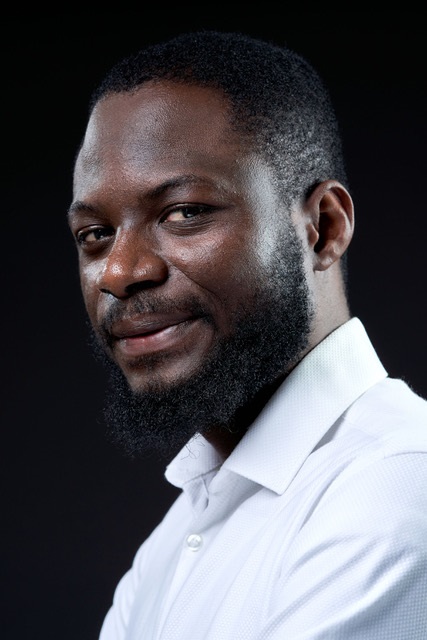 |
|
| photo: Andrew Kahumbu | |
Stephen Buoro was born in Nigeria in 1993 and has an M.A. in creative writing from the University of East Anglia, where he received the Booker Prize Foundation Scholarship and the Deborah Rogers Foundation Award. He lives in Norwich, U.K. His debut novel, The Five Sorrowful Mysteries of Andy Africa (Bloomsbury), is a tragicomic novel that provides a lens into contemporary African life, the complicity of the West, and the challenges of coming of age in a turbulent world.
Handsell readers your book in 25 words or less:
My novel is about a smart and funny 15-year-old Nigerian boy who's obsessed with blondes, Afrofuturism, math, poetry, and who his true father is.
On your nightstand now:
Brutes by Dizz Tate. It's a brilliant coming-of-age story about girlhood, set in Florida. The descriptions, especially at the beginning of the novel, are so acute and tender that I feel as though I've lived in Florida before. Tate's sentential astuteness is outstanding--reminds me of J.M. Coetzee--and it was a privilege to meet her in person in March this year. I can't wait to read her next book.
Favorite book when you were a child:
I didn't have a definite favourite. Some of the books I loved include The Swiss Family Robinson by Johann David Wyss, Treasure Island by Robert Louis Stevenson, and The Adventures of Tom Sawyer by Mark Twain. These books made me more inquisitive about the world. The first one, in particular, drew me toward employing a bifurcated approach to observing/understanding phenomena, i.e., through science and the arts, maths and literature, which is what I sought to do in my novel, Andy Africa.
Your top five authors:
Chinua Achebe, Fyodor Dostoyevsky, Vladimir Nabokov, Gabriel García Márquez, and Junot Díaz. What can I say? Apart from the pleasure of reading them, their works are instructive and nourishing.
Book you've faked reading:
Lord of the Flies by William Golding! I tried reading it several times as a teenager but never got beyond 20 pages. It felt so weird reading a book with no women in it, one with a character named Ralph, and another named Piggy. And it seemed to contain too much chitchatting. Thus, the quotation marks were preponderant and felt like winged insects frolicking towards me. Also, as an introverted teenager, the boys felt noisy and crazy to me. Now, as an adult, the concept of the book sounds compelling, and I've since read wonderful commentaries on the book, and I look forward to trying it again.
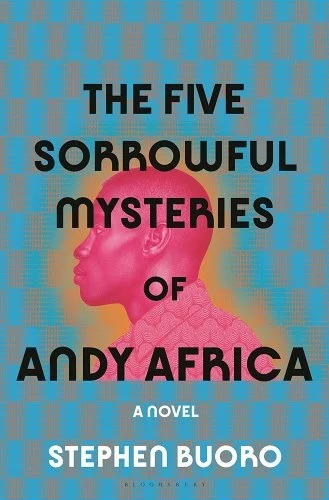 Book you're an evangelist for:
Book you're an evangelist for:
Say You're One of Them by Uwem Akpan. I love this book enormously, and I don't think many readers give it enough credit or recognise its ambition. Although many of the events it describes are brutal, it's an ambitious collection of stories that gives voice to the voiceless, and handles huge philosophical questions with great subtlety. It's a book everyone should read at least once.
Book you've bought for the cover:
I'm not sure I've done this before. But the vintage cover of Disgrace by J.M. Coetzee is harrowing and brilliant and perhaps encouraged me to buy the book. It goes without saying that Coetzee is such a master.
Book you hid from your parents:
A raucous, racy thriller called The Virgin Soldiers by Leslie Thomas. I first read it when I was 14, and it had the wildest sex scenes I'd ever seen in a book. So I hid it beneath a pile of boring books and visited it now and then.
Book that changed your life:
Black Boy by Richard Wright. I greatly loved this book. I read it when I was 13, and it changed the way I saw the world. Suddenly, I became aware of the colour of my skin, and I began to see through the monochromatic narratives of Hollywood and of Western culture. It depressed me, because it seemed to foreshadow the world that I would navigate as an adult: a racialized, unequal, violent world. Also, it bolstered in me the desire to become a writer, just like the narrator.
Favorite line from a book:
"For when does a berry break upon the tongue as sweetly as when one longs to taste it, and when is the taste refracted into so many hues and savors of ripeness and earth, and when do our senses know any thing so utterly as when we lack it?" --from Housekeeping by Marilynne Robinson.
This sentence alone is sufficient evidence for why everyone should read literary texts, for they alone, arguably, can capture the essence of our human struggle and supplement the psychosomatic nourishment we need.
Five books you'll never part with:
Things Fall Apart by Chinua Achebe (the quintessential African classic; arguably the book that flung open the doors for African writers), The Brothers Karamazov by Fyodor Dostoyevsky (a powerful and instructive intertextual philosophical text), One Hundred Years of Solitude by Gabriel García Márquez (always a pleasure to read; inimitable; a book that redrew the "rules"), The Palm-Wine Drinkard by Amos Tutuola (a bewitching, polyphonic tale), and the Bible (the book that's defined my life; an astonishing literary text).
Book you most want to read again for the first time:
The Promise by Damon Galgut. I read it early last year and I can't wait to revisit it. It's a terrific novel that does innovative things with point of view, subjectivity, and interiority. I strongly relate to its themes of religion, class, race, nationhood--for they characterise my life and constitute the central themes of my debut novel, Andy Africa. I'm sure these themes will resurface in my subsequent writing.
Book you can't wait to read:
I've heard many wonderful things about Lesley Nneka Arimah's short story collection, What It Means When a Man Falls from the Sky, and I can't wait to finally read it. I'm intrigued by its ambition and scope and its generic range, spanning realism, magical realism, and speculative fiction.
Book Candy
Book Candy
Headline of the day: "Library drops Dewey Decimal system by organizing all titles under 'B' for books." (via the Onion)
---
Beach books: CrimeReads recommended some "sun, sand, and sin: a dive into gulf coast noir."
---
Mental Floss considered "30 author names you might be mispronouncing."
---
"Behold a 19th-Century Atlas of the United States, designed for blind students (1837)," courtesy of Open Culture.
Strangers in Paradise, Volume One
by Terry Moore
What at first seems a charming slice-of-life tale about two 20-something roommates becomes a daring romp through the politics of sex, love, and mob violence in this edition of Terry Moore's beloved Strangers in Paradise comic book series. The volume, at 480 pages, comprises the first quarter of the complete serial, and includes the same arresting black-and-white panels and zany dialogue long-time fans will remember from their youth. But even those who did not read the series during its original run from 1993 to 2007 will find this repackaged volume accessible, if not downright addicting.
The story largely follows three main characters: the kindhearted but insecure Helen Francine Peters, aka Francine; the emotionally volatile but steadfast Katina Marie Choovanski, aka Katchoo (yes, pronounced like a sneeze); and their patient, artistic pal David Qin. Francine and Katchoo are best friends and roommates. Katchoo is secretly in love with Francine. Both are friends (or maybe more) with David, who's in love with Katchoo. Katchoo considers herself a lesbian... or, anyway, she thinks so. It's all a bit confusing for everyone, a dynamic only further complicated by the crime-thriller components Moore sprinkles in like an unorthodox garnish. All together, however, the ingredients work: the comic-book form is the ideal medium for such experiments, and Moore makes the chemistry a blast.
As Katchoo's history as an underage call girl named Baby June becomes clearer on the page, so, too, does her connection with another tangle in the love web: she was once both agent for and lover of Darcy Parker, part of the Parker Crime Syndicate and also... David's sister. If readers struggle to keep these narrative threads straight, that's intentional. (It's also part of the fun.) Reading Strangers in Paradise is necessarily immersive; the story requires more than a cursory investment in order to reap the full rewards of Moore's panels. There's a reason this volume of Strangers in Paradise is only the latest of several collecting and reissuing the cult classic series. The story, and its graphic novel form, are stuffed with careful details, often requiring multiple read-throughs to recognize. Combined, these components fuse to form characters that--however absurdist--are difficult not to love.
Moore plays with stereotypes and clichés throughout the book, employing them as often as he subverts them. Those readers who find the old-school rhythms of comic-book tropes comforting will discover much to appreciate. Take, for instance, the crime syndicate, which employs a ring of women--known as "Parker Girls"--to interfere with democratic processes and execute figureheads. Is such an invention ridiculous? Absolutely, but no less absurd than the superhero tales that regularly dominate pop culture. That pop lingo, by the way, is similarly wielded by Moore in his characters' dialogue, both as a self-critique and a self-indulgence. In one chapter, Katchoo suffers a near-death experience, and copes with the trauma through practiced nonchalance: "But if I have to keep slogging through day after day of this slam dance called life, at least I have a beautiful partner to do it with. I mean, how many people are lucky enough to have a gorgeous woman who'll stand by them... no matter what. ...well, besides Hugh Grant. Come on, work with me here. This is my story. Sheesh!"
Still, it is Strangers in Paradise's place within the context of graphic-novel history that cements its continued importance, and makes the case for the release of this new volume. The series was one of the first of its genre to feature unabashedly queer characters throughout its run, earning it several GLAAD Awards, as well as an Eisner. And while the feminist notions and body politics with which Katchoo and Francine wrestle might seem tired by today's standards, they were downright forward-thinking at the time of their publication; nor are they now so old-hat as they might seem. Many of Strangers in Paradise storylines--from Francine's conservative religious upbringing to Katchoo's sexual confusion to the toxic sway of crime and capitalism--remain as relevant now as they were in the '90s. Comparing and critiquing these themes in a modern context is part of the pleasure of revisiting this book.
Moore promises plenty to come after Volume 1, with plans to eventually collect the entire Strangers in Paradise run across four books. Other collected versions, including the previously published omnibuses and so-called "pocket books," will not be reprinted, making this new release the best way to read the series in its entirety. Die-hard fans will particularly appreciate the fresh full-color covers Moore is designing for each volume, and just as many will rediscover joy inside those covers as well: Moore's creative use of panel organization and occasional arresting full-page illustrations are just as memorable as they were years ago. In spite of Moore's decades of success, there's never been a better time to meet his Strangers than now. --Lauren Puckett-Pope
An Icon, Revisited
An Interview With Terry Moore
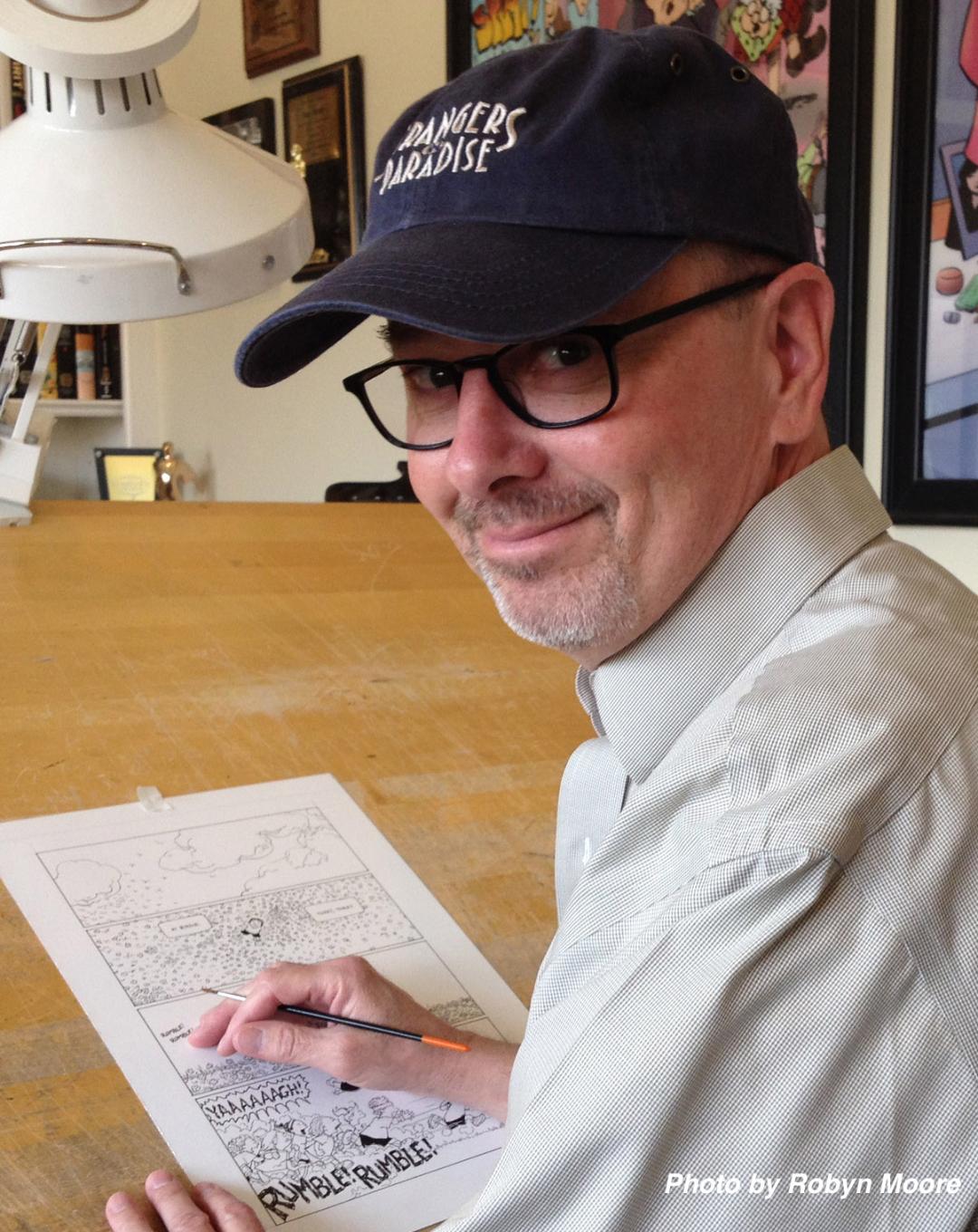 Cartoonist Terry Moore is the award-winning creator of many comics series, including the cult classic Strangers in Paradise, a groundbreaking work that earned him the Eisner Award for Best Serialized Story in 1996 and several GLAAD Awards. He is also the publisher of Abstract Studio, which will re-release volume 1 of the series (comprising the first quarter of the complete serial) on June 20, 2023.
Cartoonist Terry Moore is the award-winning creator of many comics series, including the cult classic Strangers in Paradise, a groundbreaking work that earned him the Eisner Award for Best Serialized Story in 1996 and several GLAAD Awards. He is also the publisher of Abstract Studio, which will re-release volume 1 of the series (comprising the first quarter of the complete serial) on June 20, 2023.
Let's start by getting readers familiar with your work, if they weren't already fans of Strangers in Paradise. What is this volume you're publishing now? Something old or something new?
This is the one and only Strangers in Paradise series, divided into four equal parts for today's book market. I am creating new covers, of course. It's an epic series, so four books seemed like the best way to present it to the world.
Why is now the right time to release this new collected version?
Strangers in Paradise was always said to be ahead of its time because of the themes in the story. I think readers will appreciate the story now more than ever. The struggle for love and acceptance is always relevant.
As the author and creator, how would you compare Strangers to other comic books and graphic novels, especially more contemporary titles?
It's funny--I wrote Strangers in Paradise because I wanted to read it and couldn't find it by other people. I wanted to read a modern romantic triangle where the three characters handed their script one to the right. The will-they/won't-they tension is off the charts as they all fumble through the relationship like a bull in a china shop. Hence the name: because, in love, we are strangers in paradise--not sure how to behave or what to say without blowing it. Also, I didn't want the entire story to be a quiet domestic tale, I wanted an element of danger and sacrifice. It makes for a very engaging story, where the love blossoms in the midst of life and death. I'm not sure what book to recommend on a similar vein. That's why I had to write Strangers in Paradise.
Has the fanbase for Strangers in Paradise continued to surprise you, three decades after it first came out?
Yes, it has. It's what I hoped for all along. I do believe that books with certain qualities stand the test of time. Strangers in Paradise was never about the decade in which it was created. The story is timeless because it's about people, and how we work and love and hope and fight for things we believe in. Write on that level, and it doesn't matter when the book was written or read.
What is most exciting about releasing this particular version of your collected run?
The fact that Strangers in Paradise will be introduced to the world at large, beyond the world of comics and pop culture. For that I am very grateful.
How would you describe your art style, and how has it evolved in the years since you started Strangers? Do you feel a certain nostalgia for your old drawings?
Once I began drawing Strangers all day every day, my learning curve went through the roof. I felt like I could see my art improve even in the length of one 20-page issue. The thought crossed my mind I could go back and redraw the first issue better now, but then you face this sort of philosophical choice of, Do you redraw Issue No. 1 over and over to perfection, or do you move forward to draw 100 issues and never look back? So I chose to move forward and let my learning curve show. It taught me a lesson that you can't wait for your art to mature before you hit the art world.
Get on the art train as soon as you can and grow up in public. Once I saw it in my life, I began seeing it in every artist's work. Am I nostalgic for my old style, racing through the art as a cartoonist with a brush? Well, I miss the simplicity of that, but it doesn't produce the kind of art I'm capable of making now.
How has the response from the queer community shaped the depiction of your characters, particularly given that the series won a GLAAD Award? What responsibility did you feel (and do you feel still) to depict these relationships with authenticity?
My heart was opened through my love for my first cousin Ben, who was one of the early victims of AIDS. When Katchoo says, "When do we get to live as if we belong here?" I thought of Ben and how he struggled for acceptance and a happy life. To this day, I choke up thinking about it, so my feeling about this has never waned--it's at my core. And while I'm not the characters I write, I do try to be like a journalist who reports the truth. I am able to tell you Katchoo's story because I can tell you Ben's story. So in a very real sense, I share the GLAAD Award with Ben. I miss him.
Which of the stories in this particular collection--Volume 1--do you recall being the most difficult to write (or, perhaps, draw)? Do you remember why?
The writing comes naturally for me, maybe because I've been doing it for most of my life. The art is the hard work because the process never ends. It takes a second to write "Suddenly every window in Manhattan blew out." It takes a week to draw that sentence. So it's not a matter of one scene in Strangers that was a challenge; it's every scene with architecture and buildings and a million-point perspective and furniture and decorating the interiors and.... Art is hard.
Do you have any plans to continue this series at some point, even though it's been many years since the official ending?
I've made many books since Strangers in Paradise, and all of them contain some character from Strangers. Even the series I'm currently making, Parker Girls, has Katchoo playing a major role. For me, this keeps the characters alive and relevant. I didn't leave Katchoo behind; she's still here, looking great, and still cooler than us. --Lauren Puckett-Pope
Rediscover
Rediscover: Carol Higgins Clark
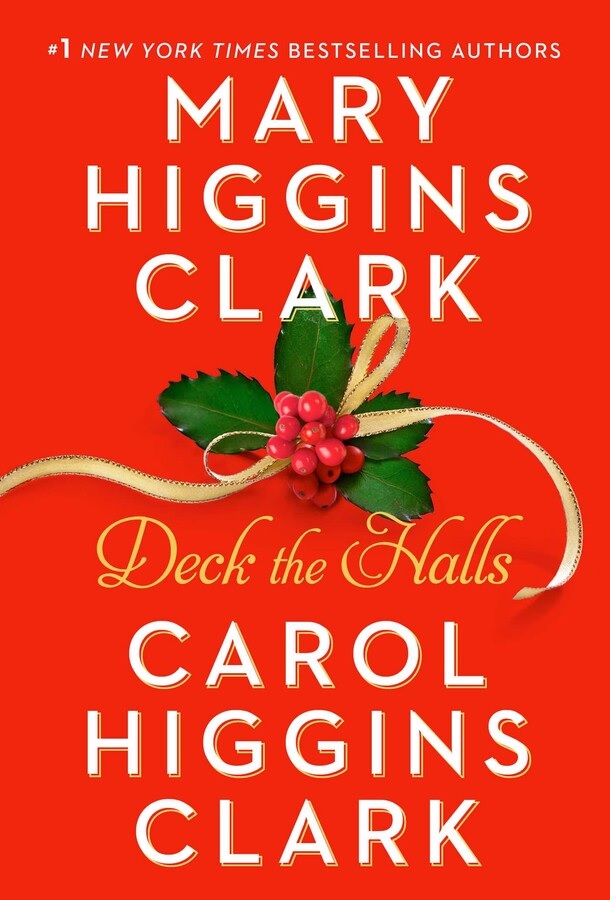 Carol Higgins Clark, "who as a young woman retyped manuscripts by her mother, the famed mystery writer Mary Higgins Clark, before going on to become a bestselling suspense novelist herself," died June 12 at age 66, the New York Times reported. Clark wrote more than a dozen novels of her own and several others with Christmas themes in collaboration with her mother, who died in 2020.
Carol Higgins Clark, "who as a young woman retyped manuscripts by her mother, the famed mystery writer Mary Higgins Clark, before going on to become a bestselling suspense novelist herself," died June 12 at age 66, the New York Times reported. Clark wrote more than a dozen novels of her own and several others with Christmas themes in collaboration with her mother, who died in 2020.
Starting out as an aspiring actress, Carol Higgins Clark "eventually accumulated a handful of credits in movies, several of them based on her mother's books," the Times noted. In 1975, while home for the summer from Mount Holyoke College, another career opportunity appeared when she bailed her mother, who was just beginning her suspense-writing career, out of a jam.
"She had her first suspense novel coming out, and had to get her second one in to her agent," Clark told NPR in 2008. "It was before computers, and she didn't know how she was going to get it retyped in time, so I did it. And that's really what got me into it, because I had talked to her about the characters and the plot. And I did that for a number of her books, which was great for me to learn about how to write."
As her mother's books gained popularity, Higgins Clark "continued to act as a sounding board--doing research, helping her make dialogue for younger characters more authentic, and more" the Times wrote. In 1986, when Mary Higgins Clark's Where Are the Children? was adapted into a film, Carol Higgins Clark had a small role as a television reporter. Over the next 28 years she continued to appear in movies, many of them made for TV, based on her mother's books, including A Cry in the Night (1992), in which she played a leading role.
That same year marked her own debut as a novelist with Decked, which introduced private investigator Regan Reilly. Her other titles include Snagged (1993) and Twanged (1998). She and her mother first collaborated on Deck the Halls (2000), which brought together Regan Reilly and one of Mary Higgins Clark's characters, Alvirah Meehan--a character Carol essentially raised from the dead.
"I had murdered off Alvirah in my first book," Mary Higgins Clark told Newsday in 2000. "Carol insisted I get her out of the coma. She said: 'You have a great character here and you're killing her? That's really bad writing.' "
Carol Higgins Clark was often asked if her mother ever gave her any advice. She generally gave the same answer: "She said, 'If someone's mean to you, make them a victim in your next book.' "


